Picture a Viking. What comes to mind? Probably a tall, fierce, blond warrior with braided hair and broad shoulders—someone you wouldn’t want to face in battle, but wouldn’t mind sharing a drink with in a crowded tavern.
We don’t blame you. Most of us imagine Vikings that way because that’s the version we’ve seen in movies, TV shows, and illustrations. But the real story is a bit different. For example, not all Vikings were actually that tall. And many of the lighter-haired ones? They dyed it.
So, if you’re curious to learn what their lives were really like, below is a list of interesting facts about Viking history, daily routines, and culture. Scroll down and see if it changes how you picture them now.
#1 Vikings Gave Kittens To New Brides
In Viking culture, giving pets as wedding gifts was a common practice, particularly among new brides. As mentioned on Norhalla.com, Viking brides were often gifted with kittens as they started their new lives together. Cats held great importance in setting up a new household and were closely associated with Freyja, the goddess of love and marriage. While today, gifting a pet as a wedding present is considered uncommon, it was an essential tradition in Viking times, symbolizing the beginning of a new chapter in the couple’s life and invoking the blessings of love and fertility from the goddess Freyja.
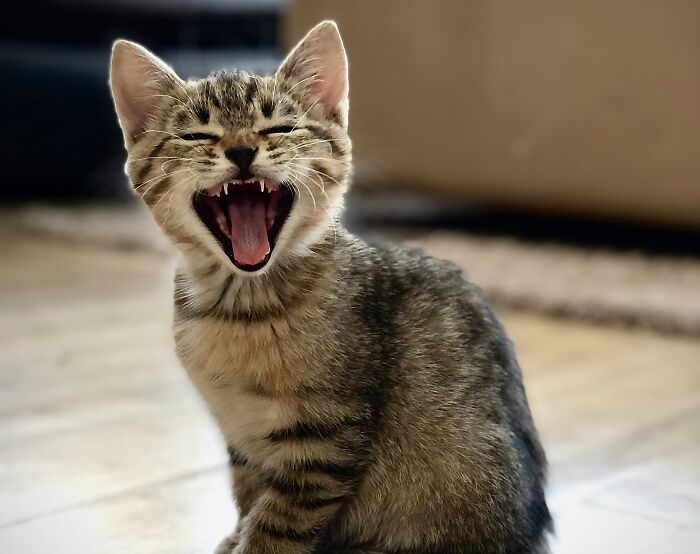
Image source: Jennifer Hartman, Loan
#2 Vikings Painted Their Shields To Hide The Weak Points In The Wood
Shields were a crucial aspect of Viking life, and their shields were among the most advanced of their time, as mentioned on Spagenhelm.com. Vikings crafted their shields from flexible woods like linden and basswood, using several planks rather than a single sheet of wood. Interestingly, the Vikings painted their shields not for decoration or to indicate group affiliation but for practicality. The paint served to conceal the wood grains, preventing their opponents from identifying weak points in the shields during battle. This clever tactic showcased the Vikings’ ingenuity in both design and strategy.
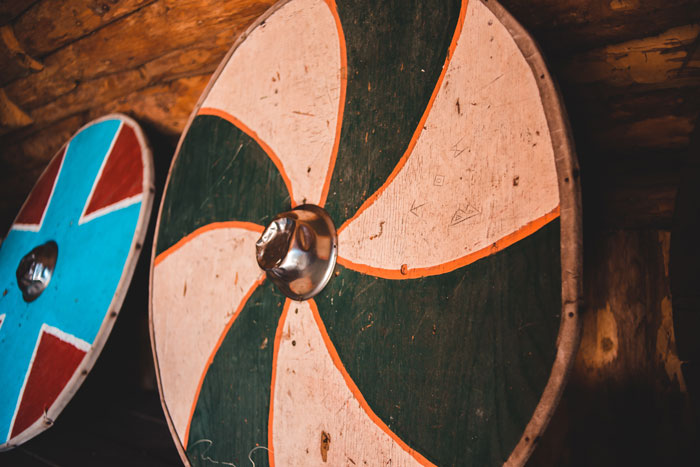
Image source: sonsofvikings.com
#3 Onions Were Used To Measure How Deep Stomach Wounds Were
The Vikings had a unique way of gauging the severity of stomach wounds in their wounded warriors. They used onions for this purpose. After feeding the injured soldier an onion, they would later smell the man’s belly. If the onion’s stench could penetrate through the wound, it meant that the wall of the stomach had been cut, signaling impending death, and no treatment would be effective. This practice helped them conserve herbal remedies, using them only when necessary to treat wounds that had a chance of healing. It showcases the resourcefulness and practicality of Viking medical practices during their time.

Image source: CropBiotech Net., Goh Rhy Yan
#4 Vikings Might Have Gone Berserk With Magic Mushrooms
Amanita muscaria, commonly known as the fly agaric, is one of the most iconic “magic mushrooms” that comes to mind for many people. Its red cap with white spots makes it stand out and has contributed to its popularity in pop culture as a symbol of psychedelics. However, it is not as commonly used as other psychotropic mushrooms because it does not produce psilocybin. The psychoactive effects of A. muscaria are due to two compounds: ibotenic acid, which acts as a neurotoxin on the brain’s glutamate receptors, causing excitatory effects in the nervous system, and muscimol, a psychoactive chemical that can induce sedative-hypnotic, depressant, and hallucinogenic activity. When consumed, these compounds lead to a drunken state, often accompanied by hallucinations, twitching, drooling, hyperthermia, and other neurological effects. Interestingly, the ibotenic acid in A. muscaria can also act as a stimulant, potentially producing the rage state associated with berserkers.
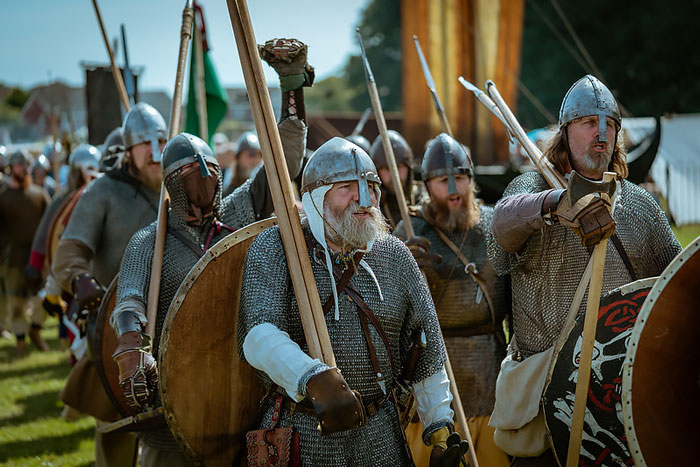
Image source: Ian Livesey
#5 There Is No Evidence That Viking Helmets Had Horns
According to recent research, the well-known Viking depictions of large warriors wearing horned helmets are actually inaccurate. The famous helmets discovered in Viksø, Denmark, about 80 years ago, actually date back to around 900 B.C.E., much earlier than the Viking era by nearly 2,000 years. Archaeologist Helle Vandkilde from Aarhus University explains that the horned helmet theme originates from the Bronze Age and can be traced back to the ancient Near East. This finding challenges the popular cultural association between Vikings and horned helmets.
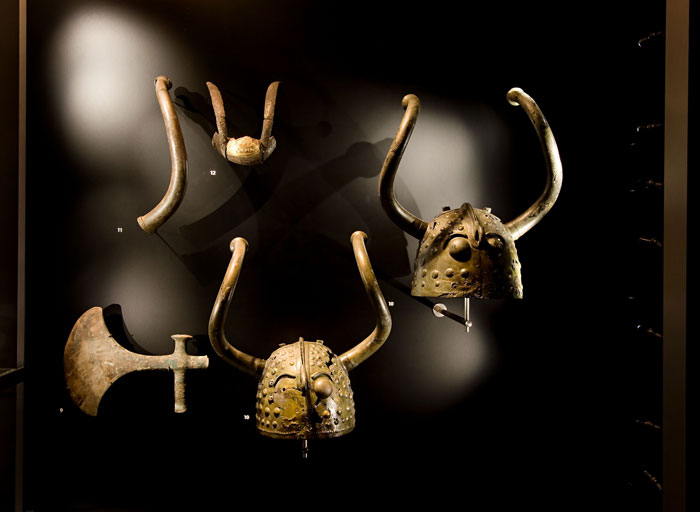
Image source: John Lee/Arnold Mikkelsen, Livia Gershon
#6 Ship Burials Were A Prominent Viking Funeral Tradition
One significant tradition among certain cultures involved ship burials, where the deceased would be placed in a boat or stone ship, accompanied by grave offerings that corresponded to their social status and occupation. In some cases, these offerings even included sacrificed slaves. The burial site would often be covered with mounds of stones and soil to create a tumulus. Other practices like sacrifice or cremation were also observed, but the most prevalent method was to inter the departed with possessions that reflected their standing in society.
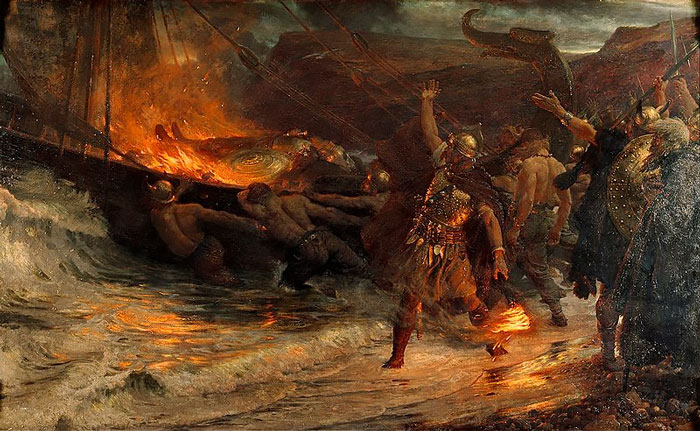
Image source: Frank Bernard Dicksee, wikipedia.org
#7 Viking Settled In North America Centuries Before Christopher Columbus “Discovered” It
Before Columbus “discovered” North America, the lands were already inhabited by various Native American tribes. However, even before Columbus’ time, European sailors embarked on voyages to explore new territories. These sailors were Vikings, and they are believed to be the first Europeans to set foot on North American soil. Led by Viking explorer Leif Eriksson, they likely conducted an expedition across the Atlantic, reaching present-day Canada. The Vikings reportedly spent a winter in Newfoundland and brought back timber and grapes to Greenland, leaving their mark on the exploration of the New World long before Columbus’ famous journey.
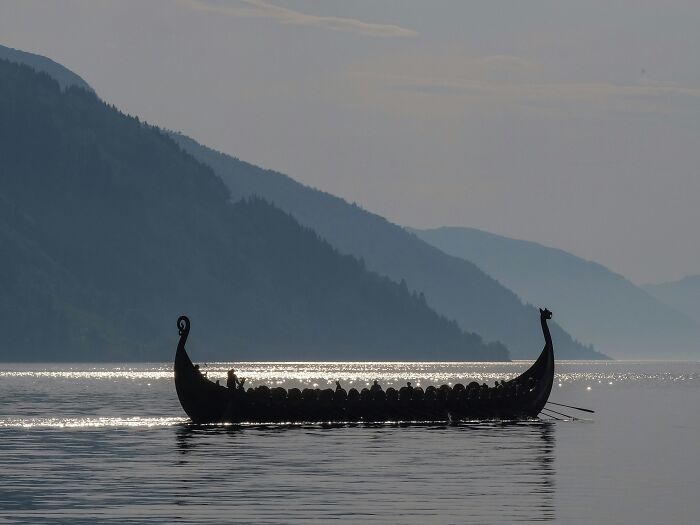
Image source: Michael Price, Steinar Engeland
#8 Vikings Took Cats On Their Travels
According to Geigl, an expert in ancient DNA analysis, sea-faring people likely kept cats to control rodents on their ships. Her team discovered cat remains with the same maternal DNA lineage at a Viking site in northern Germany, dating back to the eighth and eleventh century AD. This finding provides strong evidence that cats were indeed valued companions for sea voyages, helping to manage the rodent population on board and highlighting their significance in maritime life during the Viking Age.
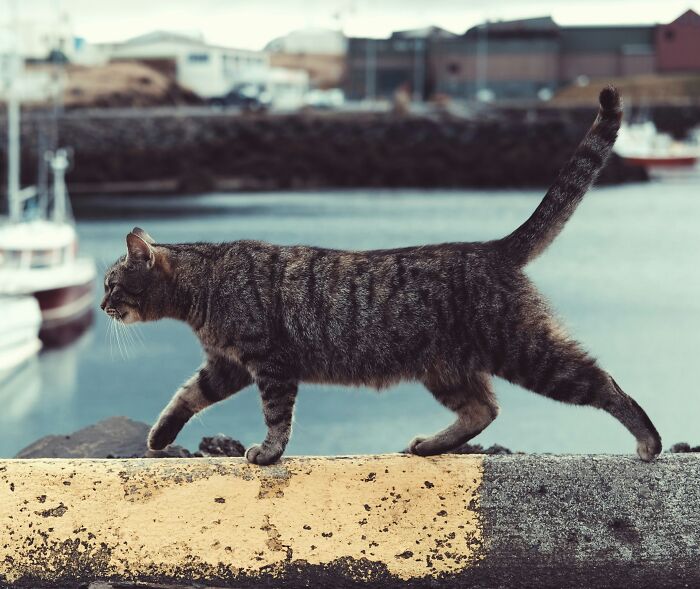
Image source: Ewen Callaway, Ayla Meinberg
#9 Vikings Were Active In The Slave Trade
Historical sources indicate that the Vikings engaged in the trade of slaves at various trading centers like Hedeby and Bolghar on the Volga. Slaves were exchanged for other goods, and Viking farmers often bought them to assist with household chores and laborious work in the fields. They also provided a significant workforce for large construction projects during the Viking Age. Slavery was not limited to the Vikings; it was prevalent in Western Europe, but the Church opposed selling fellow Christians into slavery to “heathen” Vikings. A monk’s account describes how he was appalled to witness Christian slaves being sold in Hedeby in 870, leading him to sell all his possessions and buy their freedom. The Slavic peoples of Eastern Europe became a common target for European and Nordic slave traders, and the term “slave” originates from this region.
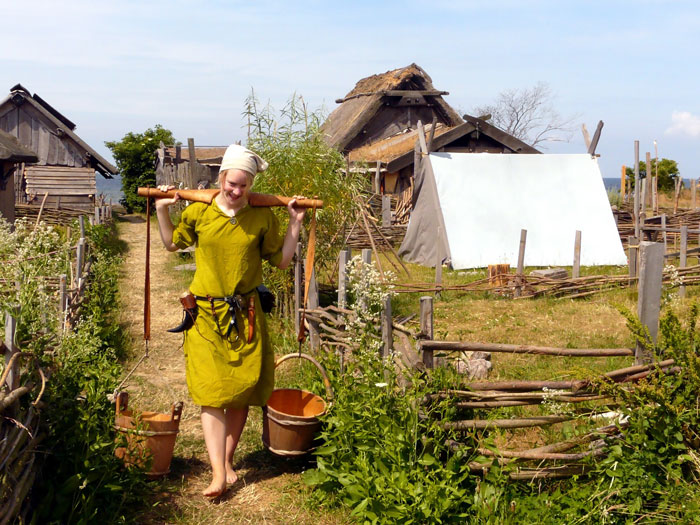
Image source: Ökologix, natmus.dk
#10 Viking Women Enjoyed More Rights Generally Not Available Elsewhere At The Time
In Viking society, girls were sometimes married as young as 12 and had the responsibility of managing the household while their husbands went on voyages and adventures. However, compared to women in other contemporary societies, Viking women enjoyed more freedom. Unless they were slaves (thralls), Viking women could inherit property, ask for a divorce, and reclaim their dowries if their marriages ended. Unlike in some other cultures, there were no laws explicitly limiting women’s rights or preventing them from being equal members of society. Viking women had the right to own land, manage their finances, and even participate in settling disputes when no male in their lineage could take responsibility. This relative autonomy granted to Viking women made their position more equitable than in many other societies of that era.
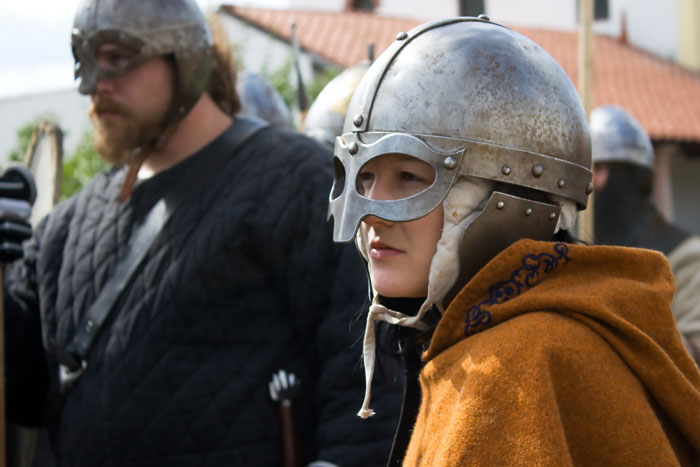
Image source: Hans Splinter, Sorayda Santos
#11 Vikings Used To Ski For Necessity And For Fun
Viking skis might be used in pairs or as singles. Fantasy images of snowboarding Vikings might come to mind at the mention of “single skis,” but we should remember that skiing for Vikings was almost certainly about covering distance efficiently in the snow (i.e., cross-country skiing) rather than downhill thrill-seeking. Still, Vikings were at least as fun-loving as any of us, and Scandinavia is full of slopes. Another difference between Viking skiing and modern skiing is that Vikings may have only used one ski pole rather than two.
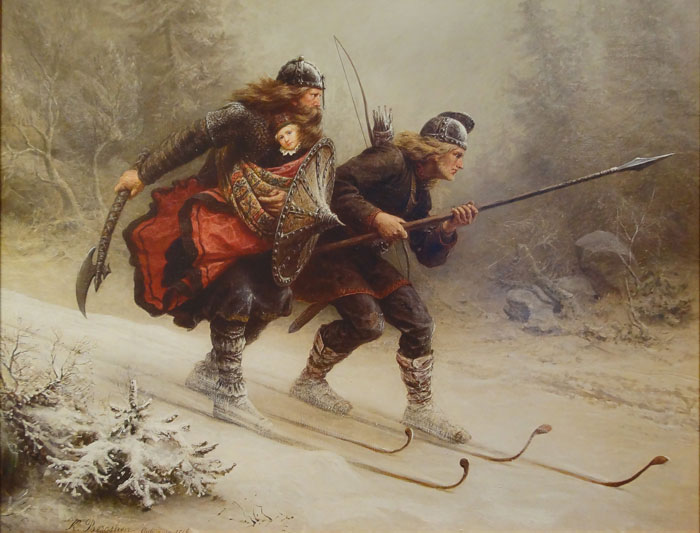
Image source: Knud Bergslien, sonsofvikings.com
#12 Viking Men Would Lighten Their Hair To Appear More Blond
In Viking culture, individuals, particularly men with dark hair, would use a potent soap with high lye content to bleach their hair and, in some cases, their beards as well. This practice aimed to conform to their culture’s beauty ideals and may have also served to combat head lice, a common issue at the time. Men were more actively involved in this hair-lightening process, using a mixture of wood ash and water called “lye,” which had a strong alkaline reaction, causing oxidation of the natural pigment in the hair roots and lightening the dark hair. Additionally, they used paint to achieve a golden color for their hair and beards, allowing them to attain their desired appearance.
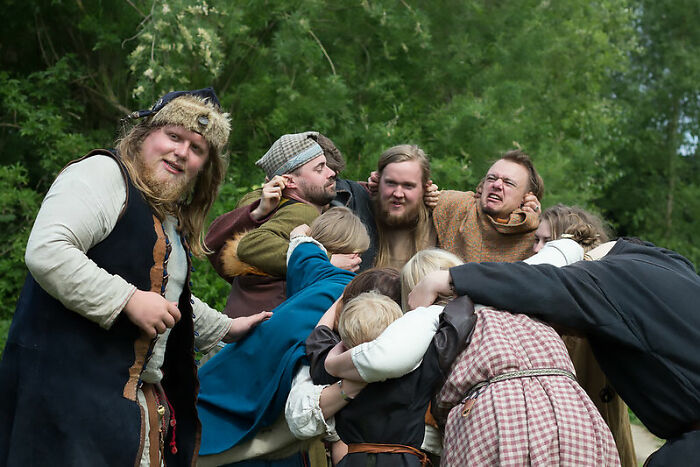
Image source: Hans Splinter, sellmagical
#13 Average Viking Lived To Be About 40
Compared to ancient times, people generally live longer in today’s society. Viking.no explains that the lower life expectancy during the Viking era was attributed to several factors, including turbulent times, childbirth-related complications, limited medical knowledge, and malnutrition. Preserved skeletons reveal that Vikings were, on average, 8-10 cm shorter than people today, and their life expectancy rarely surpassed 40-50 years. Arthritis was a common ailment, and many individuals had worn or missing teeth. However, cavities were infrequent due to their low sugar consumption. Interestingly, only a few skeletons show evidence of violence, indicating that Viking life wasn’t as brutal as often portrayed.
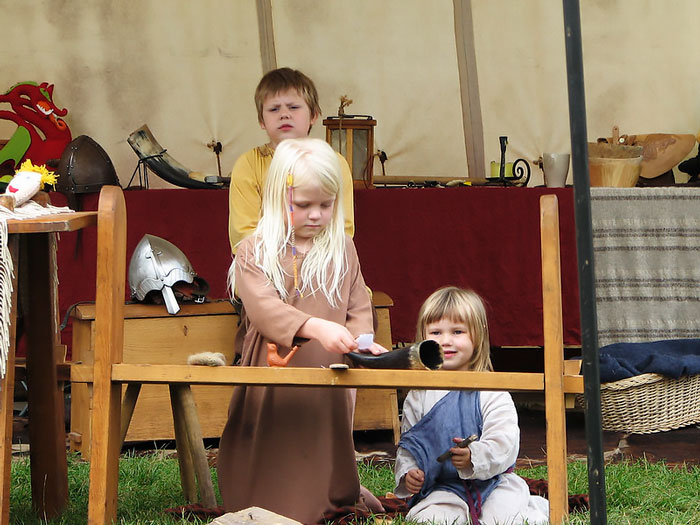
Image source: Hans Splinter, vikingeskibsmuseet.dk
#14 Life In Valhalla Would’ve Been Envied By All Viking Warriors
Valhalla, also pronounced as “val-HALL-uh,” is the majestic hall where the god Odin welcomes the worthy fallen to dwell with him. In the Old Norse poem Grímnismál, Valhalla’s roof is described as “gold-bright” and made of shields, while its rafters are adorned with spears. Those residing in Valhalla, known as the einherjar, lead a life any Viking warrior would envy. Throughout the day, they engage in fierce battles, performing countless valorous feats. However, every evening, their wounds are miraculously healed, restoring them to full health for the next day’s epic battles.
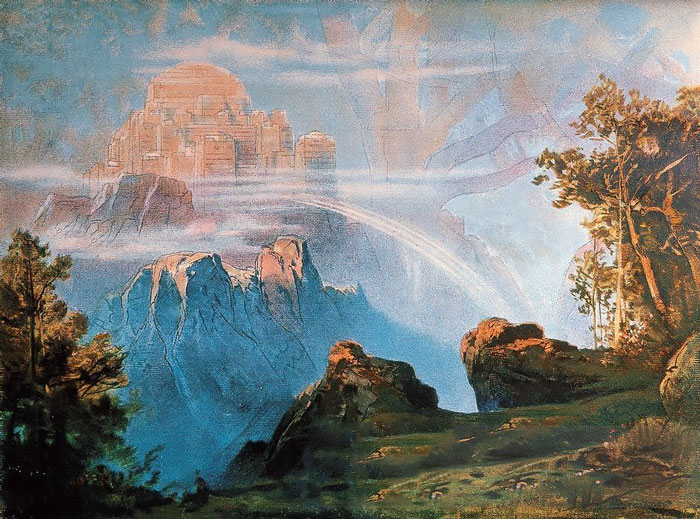
Image source: Max Brückner, norse-mythology.org
#15 The Viking Reputation For Being Well-Groomed Comes From Christians
The idea that Vikings were well-groomed comes from Christian accounts, which condemned such behavior as vanity and linked it to pagan practices, causing concern among Christians. Vikings were a group of Scandinavians, and their emphasis on grooming and dressing well reflected the values of their broader culture. Some believe that the belief in Fate played a role in this, as Vikings never knew when they would meet their end, so they aimed to look their best for the afterlife. Norse poetry, like Hávamál and Reginsmál, stressed the importance of starting the day “combed and washed” since they didn’t know where they might end up or if they would survive until the evening. Combs, which almost every Viking carried, were crafted from materials like antler, bone, ivory, and wood and were often kept in their own cases.
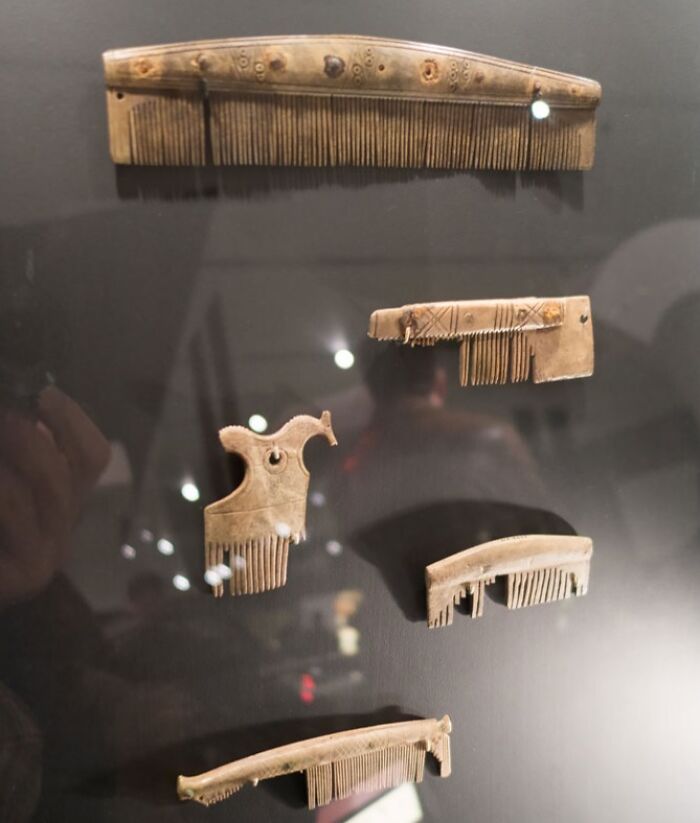
Image source: Thomas Quine, Joshua J. Mark
#16 Vikings Used Their Own Liquid To Start Fires
Despite being known for their cleanliness, the Vikings were not shy about utilizing an unusual resource – human waste. They would gather a type of fungus known as touchwood from tree bark and soak it in urine, boiling it for several days. Afterward, they would pound the fungus until it resembled felt. This process created a material that, thanks to the sodium nitrate present in urine, could smolder instead of burning, allowing the Vikings to carry fire with them wherever they went.
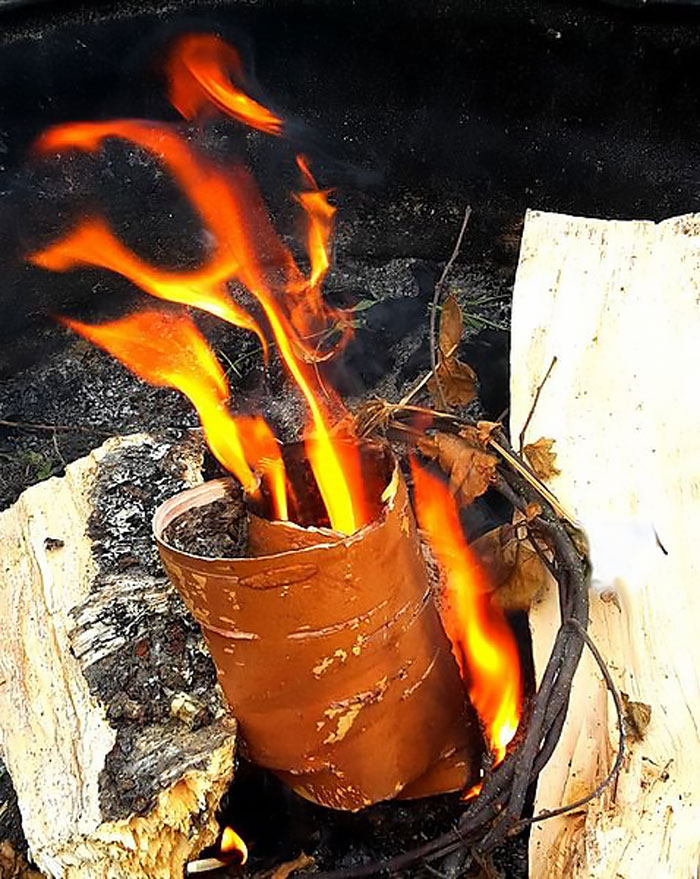
Image source: Deryni, wikipedia.org
#17 Vikings Were Never Part Of A Unified Group
In early Scandinavian society, land ownership was individual-based within clans, and close neighbors often belonged to different clans. The significance of family and kindred relationships laid the groundwork for the importance of clans. The Thing, a community assembly, played a crucial role in moderating conflicts between clans and preventing blood feuds, primarily because of the strong emphasis on kinship ties and relationships.
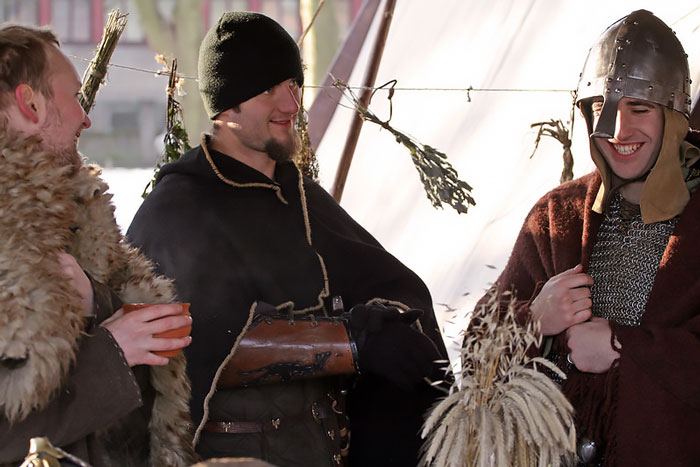
Image source: włodi, wikipedia.org
#18 Vikings Didn’t Call Themselves “Vikings”
During the Viking Age (approximately 790–1066 CE), the people we refer to as Vikings did not actually identify themselves as such. Scandinavia, as we know it today, didn’t exist back then, and instead, people lived in various clans and tribes scattered throughout the region. The word “viking” in Old Norse referred to “piracy” or a “freebooting voyage,” something one would do rather than a personal descriptor. It was more like an action, as in “go on a viking,” rather than a name for a specific group or tribe of people.
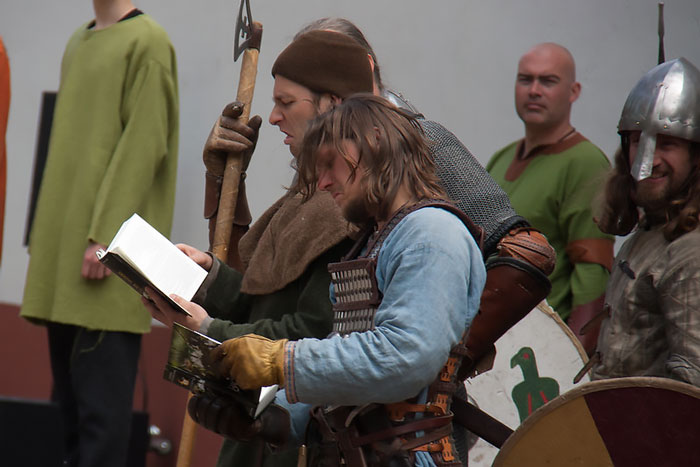
Image source: Hans Splinter, wikipedia.org
#19 Viking Society Had Three Social Classes
In Viking society, there were three distinct social classes: jarls, karls, and thralls. Jarls comprised the ruling aristocracy, and the term “earl” might have originated from this class. Karls were the working class, with a significant portion engaged in farming. Finally, thralls were the lowest class, serving as slaves and servants to both the jarls and karls. Many thralls were captives taken during Viking raids conducted abroad.
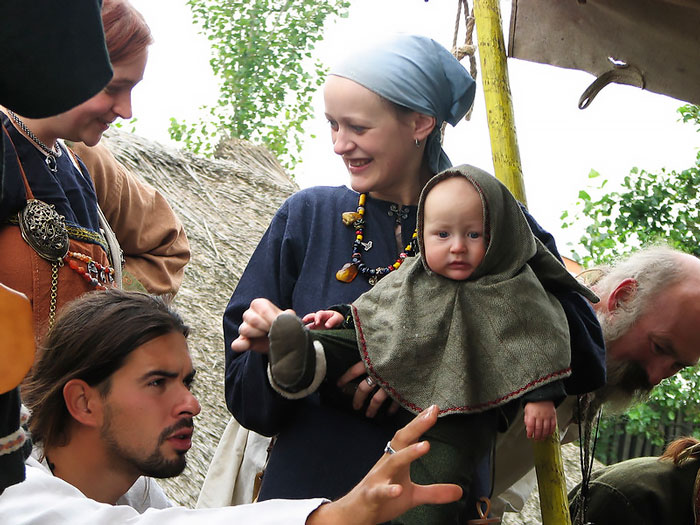
Image source: Hans Splinter, norse-mythology.org
#20 Free Viking Men Would Gather For A Thing
The Vikings had a unique form of governing assembly known as a “thing,” which interestingly has its roots in the English language. Free men from a region would gather at a thing to resolve conflicts, elect leaders, conduct legislative affairs, and engage in trade. Today, the parliaments of Iceland, Denmark, and Norway still reflect the influence of the Viking thing, as seen in their names: Althing (“general thing”), Folketing (“people’s thing”), and Storting (“great thing”) respectively. This demonstrates the lasting impact of Viking governance on the political systems of these countries.
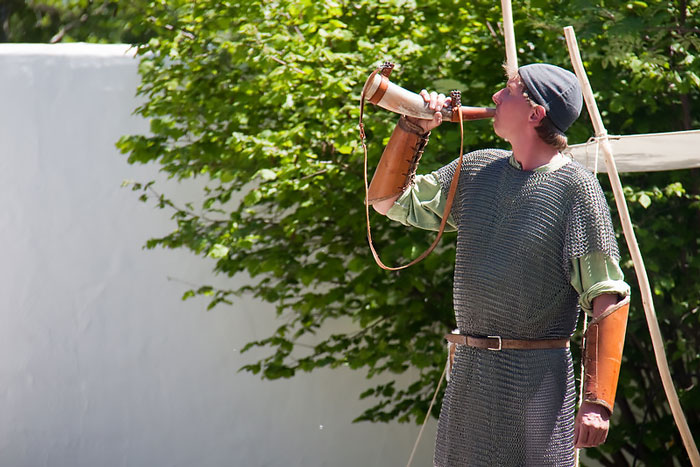
Image source: Hans Splinter, britannica.com
#21 Vikings Named Their Swords
In Viking culture, swords were believed to possess an infinite source of power, and their names played a crucial role in this belief. Each sword’s name encompassed specific attributes, traits, and historical significance. Naming a sword after ancestors or family lineage invoked the power of the past and the heritage of the family. Viking craftsmen often adorned the swords with elaborately decorated hilts, and many swords were given distinctive names like “Leg-biter” or “Gold-hilt,” highlighting their individuality and significance.
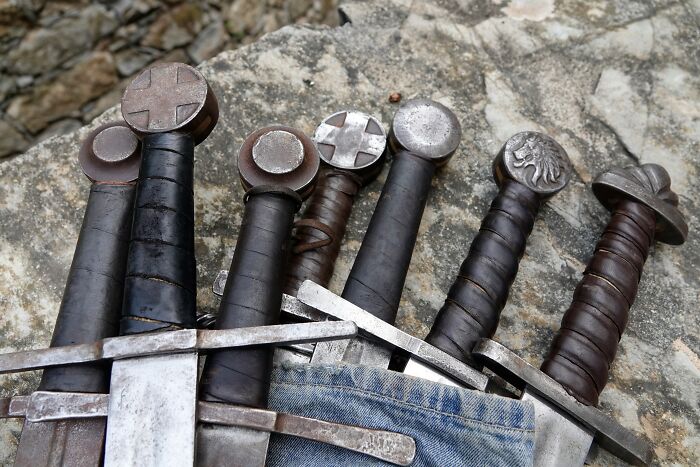
Image source: Gioele Fazzeri, hurstwic.org
#22 Vikings Were Not As Tall As People Usually Think
The common perception of Vikings being mostly tall and muscular is not entirely accurate. According to History101.com, the majority of Vikings and people from Norse countries were not exceptionally tall; most men stood between 5’7″ to 5’9″ (170-175cm), while women were about 5’2″ (157cm) on average. Despite the image of strong warriors, the reality is that most Vikings were farmers, with a lean and average physique rather than being heavily muscular.
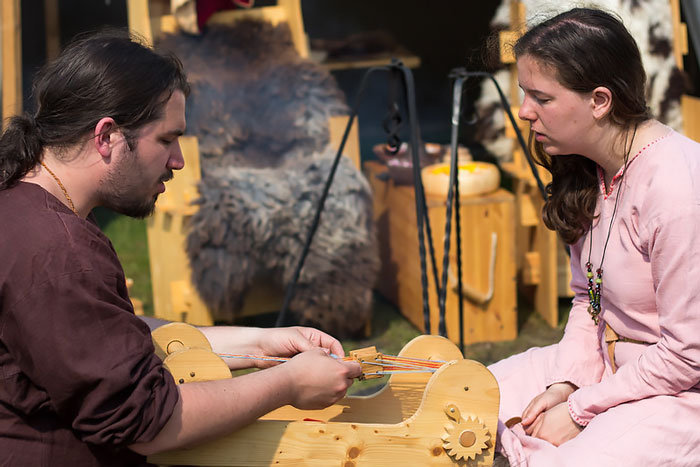
Image source: Hans Splinter, scandification.com
#23 Vikings Had Masculine Women And Feminine Men
In the Viking Age, men and women had more similar facial features compared to modern times. Women had more masculine characteristics, including prominent brow ridges, while men had a more feminine appearance with less pronounced jaw and brow ridges. These ambiguous facial features make it challenging to determine the sex of a Viking skeleton based solely on the skull. As a result, other traits, like pelvis width, become crucial in identifying the sex of these ancient remains. Studying multiple characteristics helps researchers gain a more accurate understanding of the individuals from this fascinating historical period.
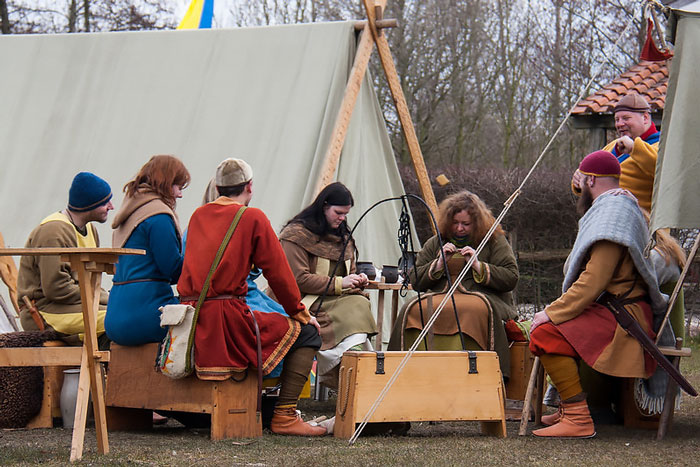
Image source: Hans Splinter, en.natmus.dk
#24 Vikings Had An Incredible Ability To Shrug Off Losses
The remarkable success of the geographically scattered Norwegian Vikings in conquering vast territories can be attributed to their courageous and fatalistic outlook. These Vikings were born risk-takers, showing incredible resilience in shrugging off losses during land battles or perilous sea expeditions. Despite the high number of casualties incurred in wars relative to their overall population, this relentless hunger for conquest and exploration persisted for approximately 250 years. Their indomitable spirit and unwavering determination fueled their quest for adventure and expansion, leading to their remarkable impact on history.
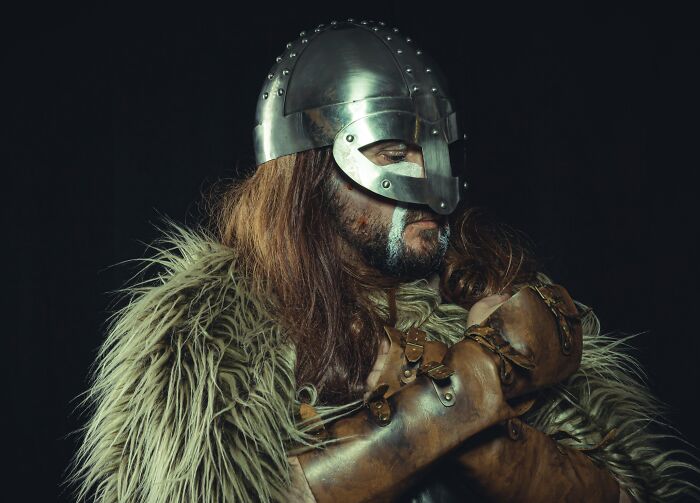
Image source: melaskole.no, Fernando Cortés
#25 Viking Houses Did Not Have Chimneys Or Windows
Unlike ours, Viking houses had neither windows nor chimneys. Meaning, it was pretty dark and smokey inside at all times. Not a pleasant thought, right?
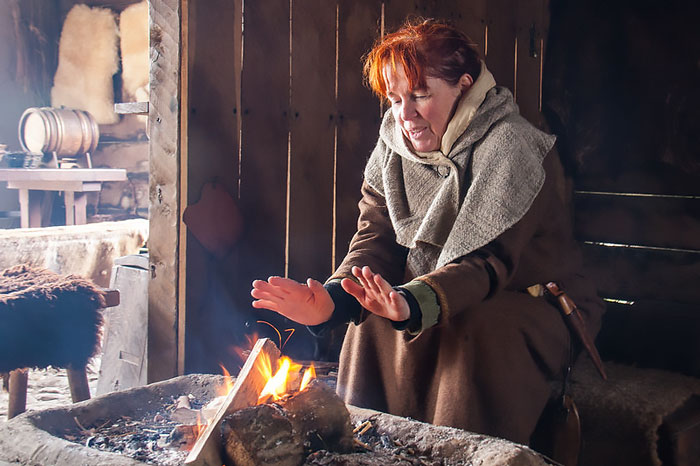
Image source: en.natmus.dk
#26 Viking Children Did Not Go To School
In Viking times, children didn’t go to school like we do today. Instead, boys learned men’s work from their fathers, brothers, and uncles, while girls worked with their mothers and aunts, mastering skills like cooking, gardening, and taking care of domestic animals and clothing. By the time they reached 12 to 15 years old, both boys and girls could effectively manage a household and a farm. There were exceptions to these societal norms, like when women accompanied men during settlement journeys to places like Iceland, Greenland, and Vinland. In places like England, Ireland, and France, Vikings settled as families, but only men engaged in raiding and trading while women took care of the farm at home.
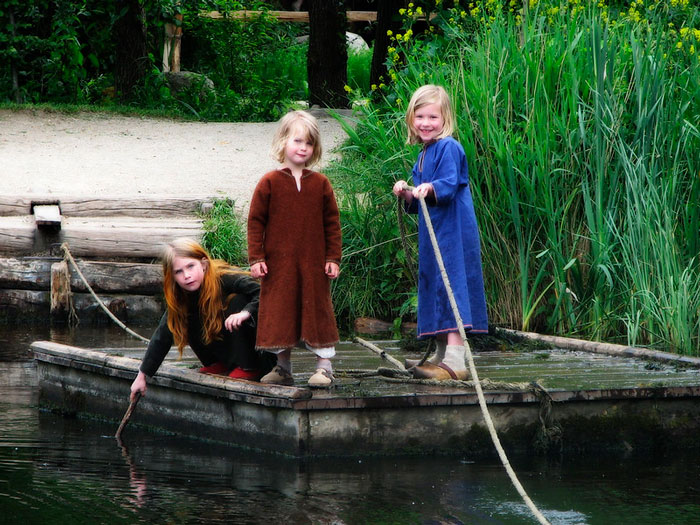
Image source: Hans Splinter, historyonthenet.com
#27 Many English Words Originated From Old Norse
Did you know that the English language has its roots in many other languages? We’ve also borrowed quite a few words, like “tsunami,” “tattoo,” and even “lemon.” And guess what? We even have some words from the old Viking language! “Ugly” actually comes from “ugga,” meaning to fear, “cake” comes from “kaka,” “husband” comes from an old Norse word for “householder,” and yep, you guessed it, “knife” is also from the Vikings! Language is so fascinating!

Image source: wikipedia.org, Ed Robertson
#28 Bluetooth Symbol Has Viking Origins
We can thank the Vikings for the Bluetooth symbol and its name, as explained by Bluetooth.com. The inspiration behind it came from King Harald “Bluetooth” Gormsson, who unified Denmark and Norway in 958. His nickname “Bluetooth” was due to a dead tooth that appeared blueish in color. The name was initially chosen as a placeholder by Nokia, Intel, and Ericsson while they were developing the technology to enable wireless connectivity between different devices and technologies.
The Bluetooth logo itself is a combination of Harald’s initials, H (ᚼ) and B (ᛒ), represented in Norse runes, specifically the Younger Futhark bind rune. This creative link to the Viking king pays tribute to his unifying efforts and serves as a fitting symbol for the technology that connects devices wirelessly, just as he unified two kingdoms during his reign.
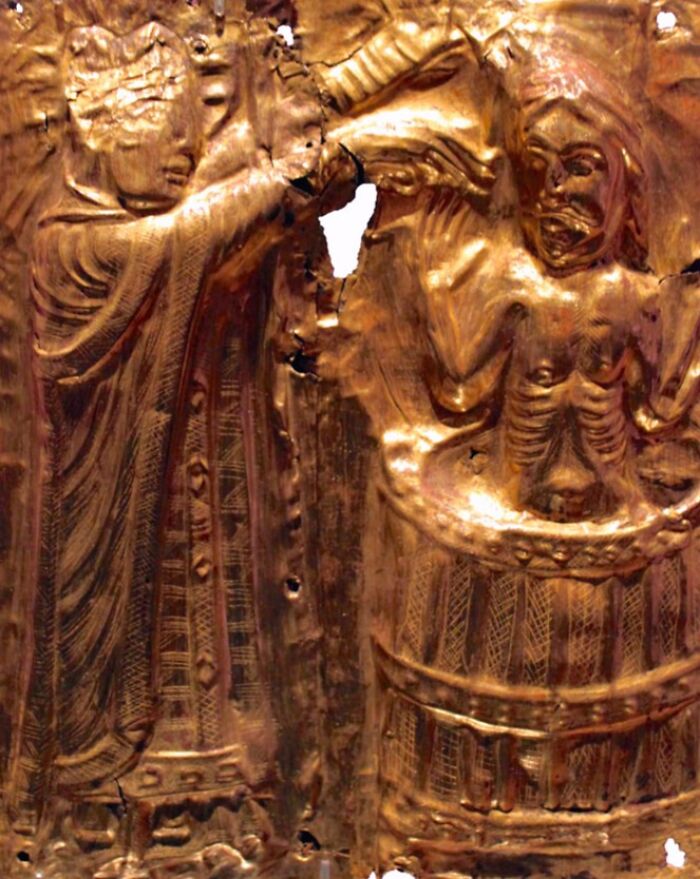
Image source: wikipedia.org, wikipedia.org
#29 The First Known Viking Raid Happened In 793
The Viking Age kicked off in the year 793 with quite a bang when they attacked the Lindisfarne monastery in England. That was the very first Viking raid ever recorded! But, like all good things, it eventually had to come to an end. And for the Vikings, their glory days concluded with the Battle of Stamford Bridge in 1066, where King Harald Hardrada lost his life. It was a time filled with adventure, conquest, and impact on history that we can still feel today.
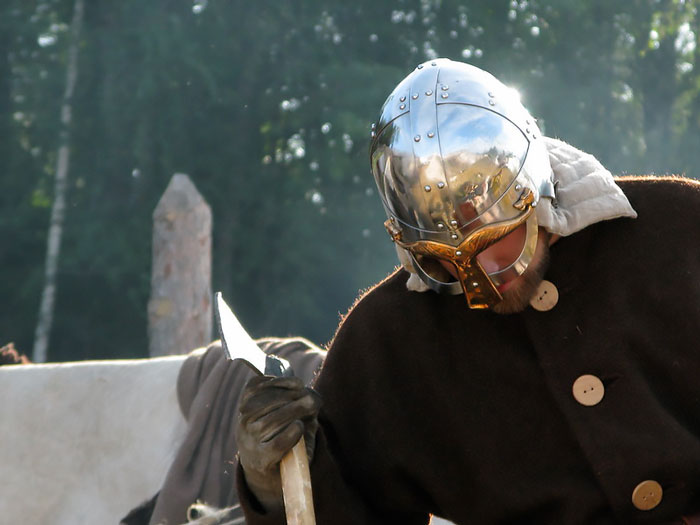
Image source: Henri Bergius, history.org.uk
#30 A Lot Of Viking History Comes From Runes
A significant amount of our knowledge about Vikings is derived from runestones, massive stones on which they carved stories about their history and themselves using runes, their writing system. Many of these stones are memorials recounting the lives of the deceased. Sweden alone has around 2,500 runestones, and others can be found scattered throughout Scandinavia. Vikings also used runes to leave their mark in other places; for example, they graffitied their names on the walls of the Hagia Sophia in Turkey, showcasing their presence and influence beyond their native lands.
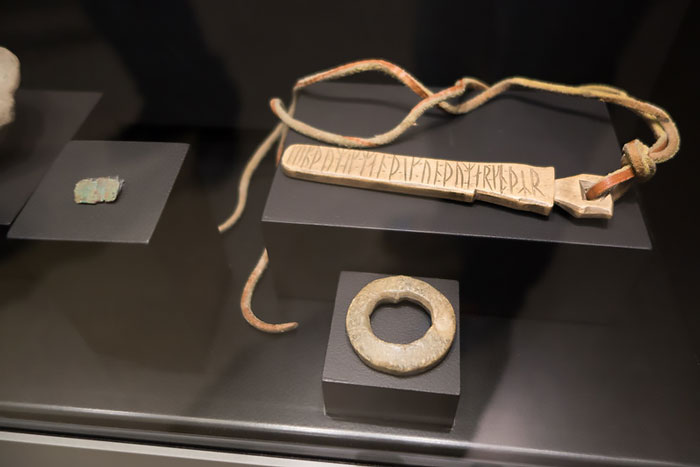
Image source: Thomas Quine, vikingeskibsmuseet.dk
#31 The Louvre Was Originally Built To Protect Paris From The Vikings
The Louvre, the world’s largest art museum and a historic French monument, began as a medieval fortress in 1190, protecting against Viking raids. Later, it transformed into a royal palace for French aristocrats and Napoleon I before becoming a renowned museum showcasing Western art from the Middle Ages to 1848.
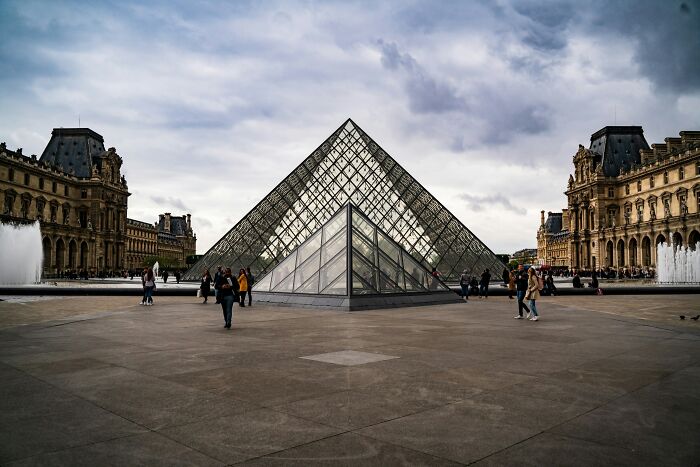
Image source: wikipedia.org, Simon Goetz
#32 Vikings Established Many Cities, Such As Dublin In Ireland And Normandy In France
The Vikings were pioneers in founding various cities and colonies, leaving their mark across different regions. Notably, they established Dublin in Ireland and the region of Normandy in France, both of which became significant settlements for centuries. In the years 879 to 920, the Vikings successfully colonized Iceland, which then served as a launching point for further colonization in Greenland. Archaeological evidence has also revealed a Viking settlement at L’Anse aux Meadows in Newfoundland, carbon-dated to around the year 1000, indicating their exploration and presence in North America. The Vikings’ exploration and establishment of settlements had a far-reaching impact on world history.
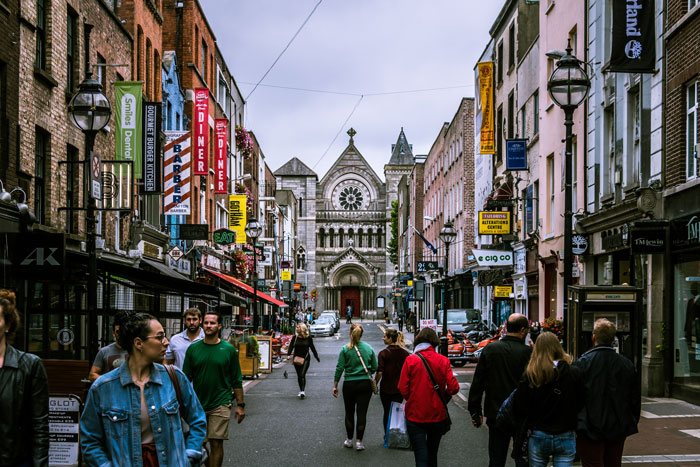
Image source: wikipedia.org, wikipedia.org
#33 Vikings Used To Rock “Reverse Mullets”
The appearance of hair and beard held significant importance for Viking men. This is evident in royal bynames, such as Sweyn Forkbeard, who likely had a divided beard, and Harald Fairhair, who was probably known for his luxurious head of hair. Archaeological discoveries of combs suggest that regular hair grooming was a common practice among the Vikings. An anonymous letter written in Old English even mentions a man advising his brother not to adopt the “Danish fashion,” described as a reverse “mullet” hairstyle, with long hair on top and short hair at the back, but instead to stick with the prevailing Anglo-Saxon style. This emphasis on hair and beard showcases the significance of grooming and style in Viking society.
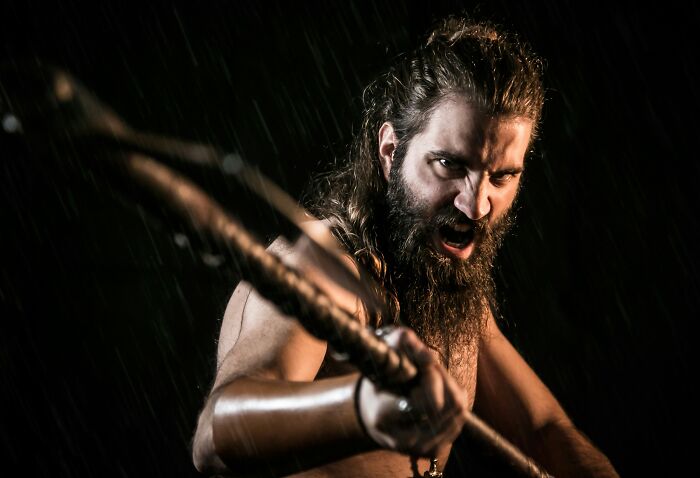
Image source: en.natmus.dk, Gioele Fazzeri
#34 Viking Girls Got Married As Young As 12
In Viking times, women often got married at a young age, sometimes as early as 12 years old. By the time they reached 20, most men and women were already hitched. It was tough back then, and people didn’t usually live past 50 years old, and only a lucky few made it to 60. Marriages weren’t like what we have today; they were arranged by the parents of the young couple. When the couple was promised to each other, the groom’s family paid a bride price to the bride’s family, kind of like a show of goodwill. And during the actual wedding, the bride’s father would give a dowry. Both families had a lot at stake, and they saw it as a big deal for them, not just the couple involved. So, marriage was more like a pact between families in those times.
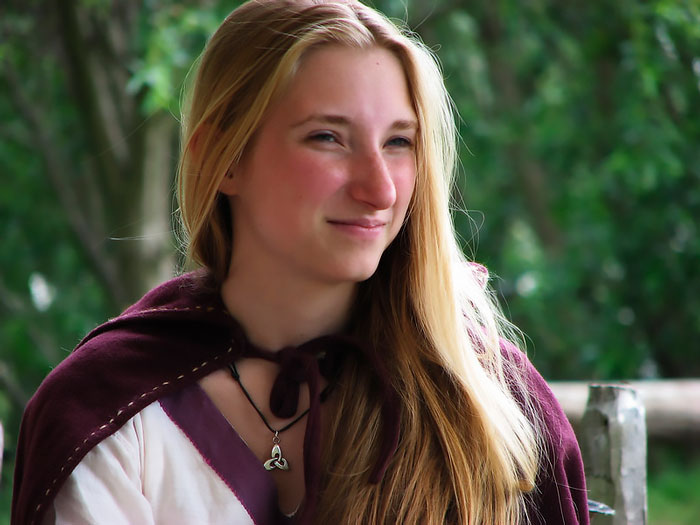
Image source: Hans Splinter, historyonthenet.com
#35 Vikings Believed In The Existance Of “Nine Worlds”
The Nine Worlds, also known as Níu Heimar in Old Norse, are the homelands of various beings in the Norse and Germanic pre-Christian worldview. Though no source lists all nine worlds explicitly, we can tentatively reconstruct them based on Norse mythology and literary references: Midgard (world of humanity), Asgard (world of Aesir gods), Vanaheim (world of Vanir gods), Jotunheim (world of giants), Niflheim (primordial world of ice), Muspelheim (primordial world of fire), Alfheim (world of elves), Nidavellir/Svartalfheim (world of dwarves), and Hel (world of the goddess Hel and the dead). Except for Midgard, these worlds are mostly invisible but can manifest in aspects of the visible world, such as Jotunheim in the physical wilderness, Hel in the grave, and Asgard in the sky.
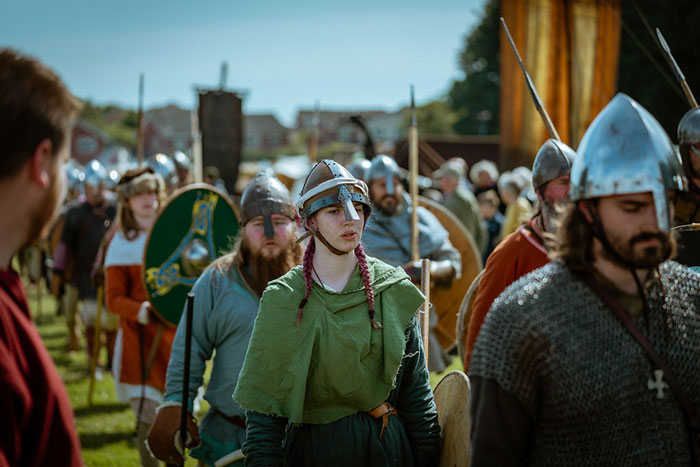
Image source: Ian Livesey, norse-mythology.org
#36 Viking Men Spent Most Of Their Time Farming
Contrary to popular belief, raiding and pillaging only occupied a small portion of the Vikings’ time during their era. In reality, most Vikings were farmers. They primarily cultivated crops like oats, barley, and wheat, and occasionally grew various vegetables. The countryside was reminiscent of present-day Norway, with plenty of livestock such as pigs, cattle, sheep, horses, and chickens, resembling the standard features of European farms.
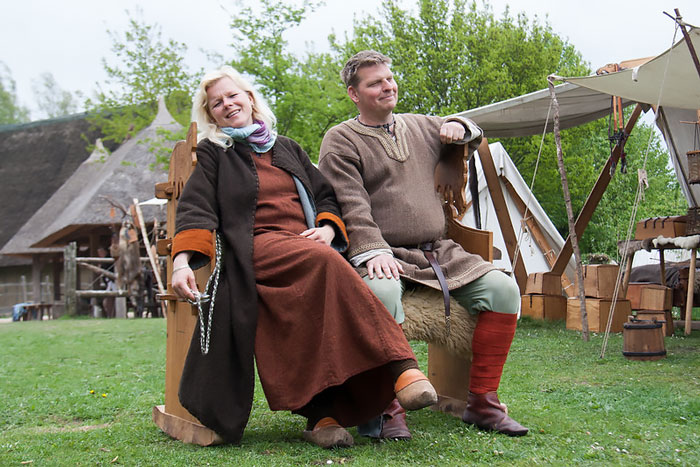
Image source: Hans Splinter, norse-mythology.org
#37 Vikings Wore Makeup
The television drama series “Vikings,” aired on the History Channel since 2013, is known for its entertainment value, but historical accuracies should be viewed with skepticism. However, according to Bustle.com, one accurate aspect of the show is the makeup, specifically the eyeliner. The eyeliner featured in the series is consistent with what Vikings would have worn. Though their eyeliner was made using materials not suitable for today, such as lead and oxidized copper, both men and women in Viking society used it to protect their eyes from the sun.
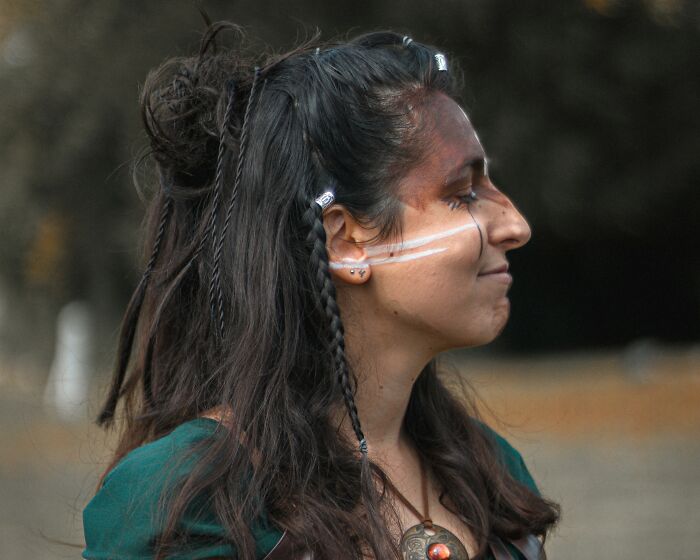
Image source: sites.nd.edu, Valentin Lacoste
#38 Berserkers – The Fiercest Viking Fighters
Vikings were renowned for their ferocity and warrior spirit, leaving a formidable legacy across Europe. Among their ranks, the Berserkers stood out as some of the strongest fighters. As reported by Historyhit.com, Berserkers were champion warriors who entered a state of “trance-like fury” when engaging in battle against their foes. This intense state was likely induced, at least in part, by ingesting specific concoctions before combat. As mentioned in History101.com, Berserkers were identifiable by wearing bearskins and were believed to receive blessings from the Norse god Odin. In fact, the English word “berserk” finds its origin in this special class of Viking warriors, showcasing their legendary reputation as fearless and powerful fighters.
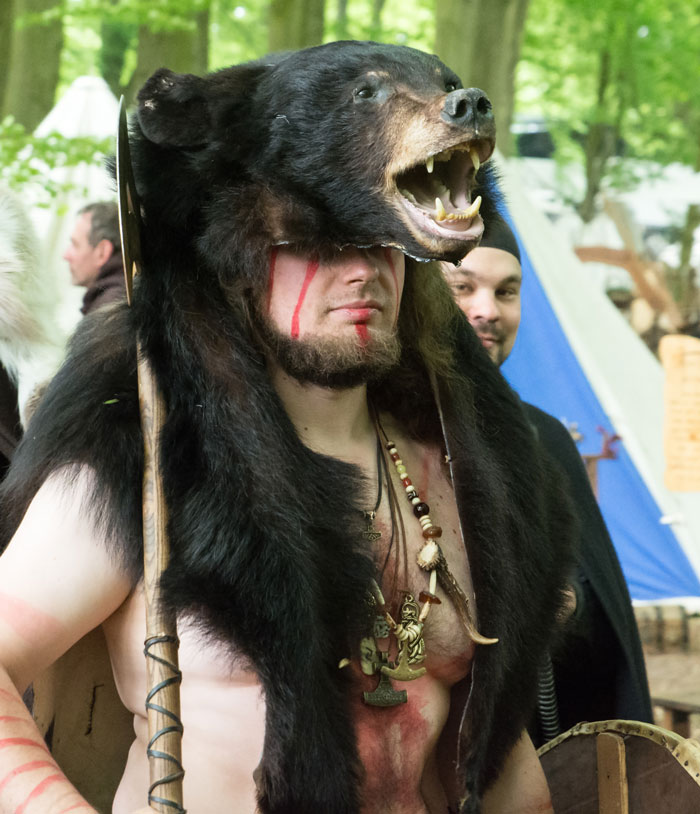
Image source: Frank Schwichtenberg, wikipedia.org
#39 Cats Already Lived With Vikings 2000 Years Ago
In 2014-2015, archaeologists made an exciting discovery in Aalborg, Denmark, finding the oldest feline remains in the Scandinavia region. The remains were estimated to be around 2000 years old in 2016, challenging previous beliefs that cats were not introduced to Denmark until the Viking Age. The presence of a thousand-year-old cat remains in Aalborg has cast doubt on the previous assumption, shedding new light on the history of felines in the region. This discovery offers valuable insights into the ancient interactions between humans and cats in Scandinavia.
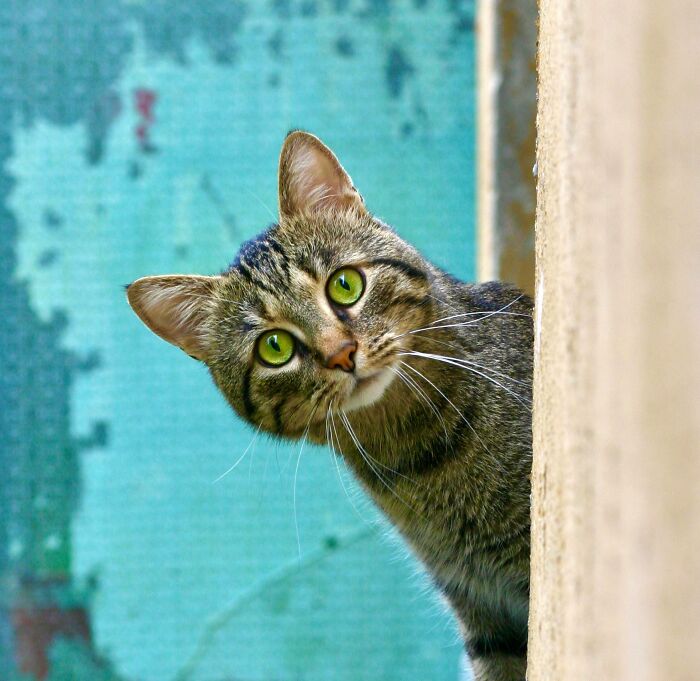
Image source: Christian Wenande, Bogdan Farca
#40 Vikings Had Many Gods, Such As Thor And Loki
The Vikings in the Scandinavian north followed a polytheistic belief system, worshipping numerous gods and goddesses from Norse mythology. Through ancient texts, sagas, and archaeological findings, we have gained valuable insights into these deities and how the Vikings perceived them. Thanks to the Marvel Universe, Thor has become one of the most well-known and recognizable Norse gods in today’s world. As the god of thunder and lightning, he wielded the powerful Mjölnir, capable of slaying giants and shattering mountains. Riding a chariot drawn by two colossal goats, Tanngniost and Tanngrisnir, Thor was often seen as the mightiest of the Norse gods, entrusted with guarding Asgard, the stronghold of the Æsir. Among all the gods, he was highly revered and worshipped by most Vikings.
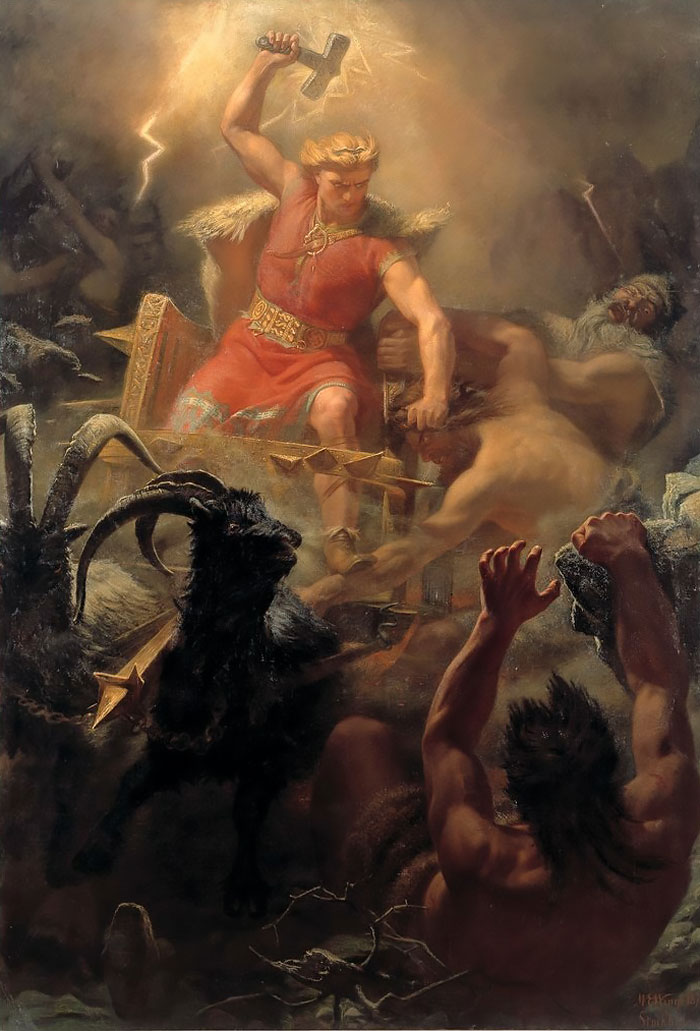
Image source: Mårten Eskil Winge, history.co.uk
 Follow Us
Follow Us





